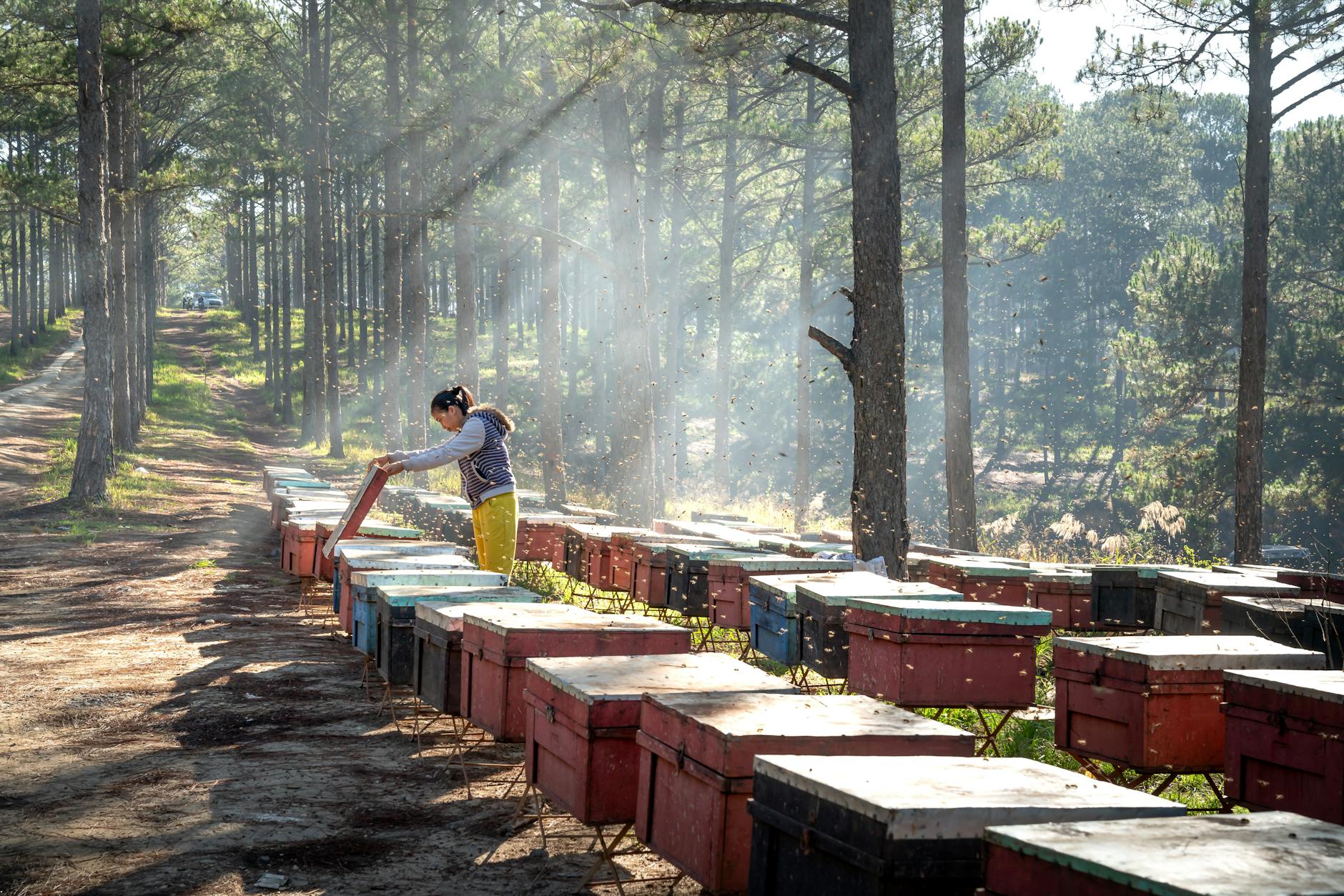
Polystyrene vs. Wood Hives : Which is Best for Bees?
Mankind has been working with honey bees for over 17,000 years. Over the years, beekeeping has evolved with new technologies and materials being introduced to improve hive construction. One of the latest advancements is the use of alternative materials such as polystyrene for hive construction, offering beekeepers new options to consider.
In this article, we will explore the pros and cons of using polystyrene vs. wood hives for honey bees, providing valuable information for beekeepers looking to make informed decisions about their hive construction.
Table of Contents
Advantages of Wooden Hives
Wood is the most popular hive material on the planet. Wooden hives are popular for several reasons:
1. Natural appeal: Wood has a natural and traditional appeal, making it a popular choice for beekeepers. The aesthetic appeal of wooden hives can add to the overall charm of a beekeeping operation.
2. Readily available: Wooden hives are readily available and can be easily sourced from local suppliers. This can make it convenient for beekeepers to acquire the equipment they need without having to wait for shipping or deal with potential supply chain issues.
3. Durability: Wooden hives are known for their durability, with proper maintenance they can last for many years. This can make them a cost-effective option for beekeepers in the long run.
4. Customization: Wood hives can be easily customized or modified to meet the specific needs of the beekeeper. Whether it’s adding additional frames or making adjustments to the hive design, wood allows for flexibility in hive management.
5. Environmental impact: Wood is a renewable resource, making it a sustainable option for beekeeping.
Disadvantages of Wooden Hives
However, there are some drawbacks to wooden hives:
1. Susceptibility to rot and decay: Wooden hives are more prone to rot and decay due to exposure to moisture and the elements. This can lead to structural integrity issues and the need for frequent repairs or replacements.
2. Regular maintenance required: Due to their susceptibility to rot and decay, wooden hives require regular inspections and treatments to ensure their longevity. This adds to the time and effort needed for beekeeping.
3. Heavier weight: Wooden hives are typically heavier than hives made from other materials such as plastic or polystyrene. This can make them more difficult to move and handle, especially when conducting hive inspections or transporting them to different locations.
Advantages of Polystyrene Hives
The advent of new technologies has made it possible to overcome many of the disadvantages of wooden hives. The use of newer materials such as Expanded Polystyrene (EPS) has several benefits for beekeepers:
1. Better insulation: Polystyrene hives provide better insulation for the bees, helping to regulate the temperature inside the hive. This can lead to increased honey production and overall healthier bees. High-density EPS offers up to 8 times the insulating value of traditional wooden hives. The average R value for a wood hive is R1, while poly hives boast R values around R8.
2. Durability: Polystyrene hives are more durable than traditional wooden hives, making them a long-lasting investment for beekeepers. They can withstand the elements and are less prone to damage.
3. Lightweight: Polystyrene hives are lightweight, making them easier to handle and transport. This can be especially beneficial for beekeepers who need to move their hives for pollination or other purposes.
4. Low maintenance: Polystyrene hives require less maintenance than traditional wooden hives. They are less prone to rot and mold, and they do not need to be painted or treated with chemicals.
5. Cost-effective: The initial cost of polystyrene hives may be slightly higher than traditional wooden hives, however their durability and low maintenance requirements make them a more cost-effective option in the long run. It has been demonstrated that Polystyrene hives actually have a lower total cost of ownership over the life-cycle of the product when compared to wooden hives.
6. Environmental Impact: Polystyrene hives are 100% recyclable.
High-density Expanded Polystyrene for Hives
When choosing EPS as a hive material it is important that it has a high density. Early prototypes of EPS hives were susceptible to being chewed by the bees causing damage to the hive and negative sentiment among beekeepers. This has been overcome with advances in producing High-density EPS material.
It is easy to see that the use of newer materials such as polystyrene in hive construction can lead to improved efficiency and success for beekeepers. Polystyrene hives offer better insulation, are lighter in weight, and can provide a more stable environment for the bees. While wooden hives have been the traditional choice, it’s worth considering the benefits of using polystyrene hives for beekeeping. Ultimately, the choice of hive material will depend on the specific needs and preferences of the beekeeper.
At World of Honey we feature the highest quality Polystyrene hives and accessories from the best manufacturers on the planet.